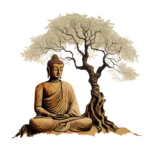Madhubani Painting: A Wonderful Folk Art
Madhubani painting, also known as Mithila painting, is one of the most famous folk arts of India. Originating from the Mithila region of Bihar, this art form is known for its vibrant colours, intricate patterns, and cultural and spiritual symbolism. Due to its distinctive style and cultural richness, it has gained global recognition.
1. Historical background
Each region has a distinctive style of art which reflects its regional languages, traditions, customs, stories, shrutis, etc. Regional arts also reflect the history, geography and economics of a particular region and connect the people with the background, customs and traditions of their community. Bihar has a rich tradition of folk art. The history of Madhubani painting dates back to ancient times. It is believed that it started in the Ramayana period, when King Janak ordered painters to paint paintings on the walls of his palace on the occasion of the marriage of his daughter Sita. The fame of Mithila painting is all over the world today.
Folk Painting: Painting is an effective medium to express the emotions of human beings. The first form of script came to us from painting. The roots of painting in Bihar are quite deep. This art is the major folk art of Madhubani, Darbhanga, Saharsa and Purnia districts. This art was traditionally created by rural women on the walls and floors of houses during religious festivals, marriages and other important occasions. From generation to generation, this tradition developed into a distinctive art style.
2. Main Features
Madhubani painting is known for its unique style, themes and techniques.
•Subject:
These paintings depict Hindu gods such as Krishna, Rama, Shiva, Durga and Saraswati. Elements of nature such as fish, peacocks, trees, and lotuses, which symbolize prosperity and harmony, are also prominent. In addition, mythological stories and social events are also part of the themes.
• Design Elements:
Geometric patterns, floral motifs and symmetrical designs are integral parts of Madhubani painting. Clear lines are drawn in black and red and filled with zigzag lines. These designs fill the images, leaving no blank spaces. Which are called Kachni and Bharni. Dark and bright colors are used in it.
•Colour:
Dark and bright colors are used in it. Traditionally, natural dyes were used. Yellow was made from turmeric, blue from indigo, green from leaves, black from burnt rice straw and red from vermilion. Bright and vibrant colors are used in the paintings.
•Medium:
Earlier this art was done on walls and floors, but now it is also made on paper, cloth and canvas. This shift helped it reach the global level.
3. Styles of Madhubani Painting
There are five main styles of Madhubani painting, each with its own characteristics:
1. Bharani Style: Based on vibrant colors and religious themes.
2. Kachni style: Use of fine lines and minimal colours.
3. Tantric Style: Focuses on tantric symbols and mystical depictions.
4. Tattooing style: Inspired by traditional tattoos and tribal motifs.
5. Kohbar Style: Created during weddings, which is filled with symbols of love, fertility, and prosperity.
4. Revival and Modern Significance
During the severe drought in Bihar in the 1960s, the All India Handicrafts Board encouraged local women to put their wall art on paper. This initiative not only revived the art form but also made it a means of livelihood.
• Honours and Awards:
Renowned artists like Sita Devi, Mahasundari Devi and Ganga Devi have been honoured with National Awards for their contributions.
• Sita Devi: Madhubani paintings of Jitwarpur village got official recognition when Sita Devi was honored for Madhubani paintings by the Government of Bihar in 1969. He was also awarded the Padma Shri in 1984 for his Madhubani paintings. In 2006, he was awarded the Bihar and Shilp Guru Awards.
• Mahasundari Devi: Mithila is famous as a painter of art. Barely literate, Mahasundari Devi started painting Madhubani art from her aunt. In 1961, she left the then prevalent veil practice and made her mark as an artist.
• Established a cooperative society called Mithila Handicraft Artists Industrial Cooperation Society which supported the development of handicrafts and artists. The paintings painted by him are considered to be the legend of art. Apart from Mithila painting, Mahasundari Devi is known for her expertise in clay, paper messy, Sujani and Sikki art.
• In 1982, he received the National Award from President Neelam Sanjiva Reddy. In 1995, he received the Tulsi Award from the Government of Madhya Pradesh and in 2011, he received the Padma Shri Award from the Government of India.
Ganga Devi: Ganga Devi was born in the year 1928. She was one of the prominent artists of Madhubani painting. He is instrumental in popularizing Madhubani painting outside India.
• Created the Kachhani (line painting) style apart from the traditional painting craft of Mithila. His paintings were displayed at the Celebration of American Folk Life and Ride in Roller Coaster at the Moscow Hotel in the United States.
• He was awarded the Padma Shri, India’s highest civilian award, in 1984.
• Global Identity:
Madhubani art has been exhibited in international exhibitions and is popular as a decorative form in modern homes and institutions.
• Geographical Indication (GI) Tags:
It has been given a GI tag, which reflects its cultural and geographical uniqueness.
5. Challenges and Conservation
Though Madhubani painting has gained fame, it is facing challenges such as commercialization, loss of traditional methods and dwindling number of artists.
Efforts to preserve this art include:
• Support to artists by government and non-governmental organizations.
• Making Madhubani art a part of the curriculum in schools.
• Promoting it through fairs, exhibitions and online platforms.
conclusion
Madhubani painting is not just an art form; It is a symbol of the cultural heritage of the Mithila region. Its journey from rural walls to global galleries is a testimony to how timeless and relevant this art is. Even in modern times, Madhubani art remains an integral part of India’s cultural and artistic identity.



